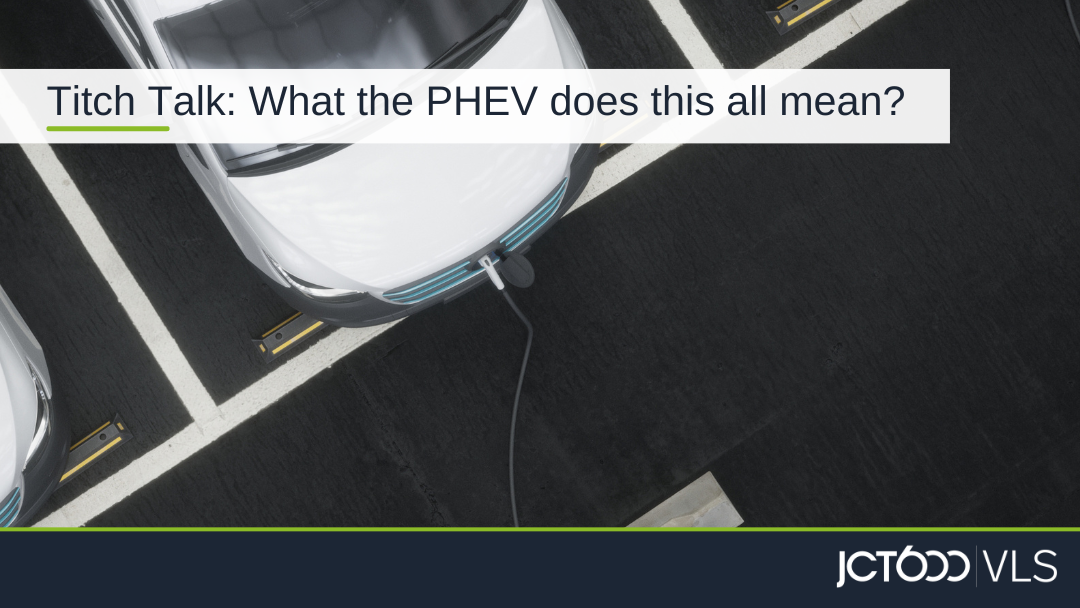By Paul Titchmarsh, Operations Director at JCT600 VLS
So, the government have moved back the date for all new vehicles to be an EV from 2030 to 2035, 80% of cars and 70% of LCVs to be an EV by 2030. But what does this mean in reality? What will change?
It is hard to be precise at this distance (6 and a bit years) but the most obvious variation looks like being a greater ability to buy a PHEV (Plug-in Hybrid Electric Vehicle) between those dates.
This is driven, more than anything, by what the vehicle manufacturers are prepared to make. Sounds obvious, but model change cycles are around 5-6 years (so much planning and decisions will already have been made that already hit the timeframe). Also, the manufacturers are still held to up to 80% of registrations being EV in 2030, so their need to offer other products is small and may not make sense to make anything other than PHEV as an alternative.
PHEVs have often been cited as unnecessarily expensive, resource-heavy (two power sources) and slightly pointless when the EV range is a useable 20 (ish) miles.
Well, hold onto your hats kids, as this is changing.
As an example, Volkswagen is including improved versions of PHEV variants of both the Passat and Tiguan. The new 1.5-engined version (previously 1.4) will be paired with a bigger 19.7kWh battery (was 13kWh) giving a range in ideal conditions of over 60 miles. This new setup will also allow the car to be charged at up to 50kW by CCS Rapid charging. Early 2024 will see these cars on the road.
That’s all very well, I’m sure some of you are thinking, but what about vans? The LEVC VN5 is great however a starting price of around £54k and the brand being outside mainstream are limiting factors. Well, Ford did do a PHEV Custom, but that was discontinued with the last generation.
Cinders, you shall go to the ball. Ford has now announced that the new generation of the UK’s Best Selling Vehicle 2022 (42762 registrations v 42704 Nissan Qashqais) will have a PHEV variant.
Keeping it simple, Ford has used almost the same setup as their Kuga PHEV. This is a 2.5-litre petrol engine joined up with a hybrid system featuring an 11.8kWh battery – good to give a WLTP range of between 23-33 miles depending on usage. This also gives a combined CO2 figure of 36g/km.
The PHEV is only available as a 320 derivative (giving a payload of approximately 945kg) and starts at middling Trend trim (both factors increasing the price), resulting in an On The Road price of just under £40k plus VAT.
Of course, this won’t be for everyone – but as fleets continue to scratch their heads as to how to integrate full BEV LCVs into their working patterns, this does at least give some low-emission choices to customers needing to make progress with their CO2 reduction efforts.
A key benefit of the PHEV over a BEV equivalent is that it is rated to tow up to 2300kg (braked), with low towing capacities a distinct challenge for fleets.
By no means is this a silver bullet on the road to zero emissions for LCV fleets but it is a definite stepping stone. From an air quality point of view, the ability to move away from diesel is a very important choice.
So, back to where we started. The next few years look to be a varying combination of PHEV and BEV registrations whilst trying to move away from diesel. This is still a far tougher question to answer in the LCV arena, however, Ford is showing it can be done and if progression to a 60-70 mile EV range can come in this area like is now more common in the car space, it will suit more and more fleets.
Watch this space.

